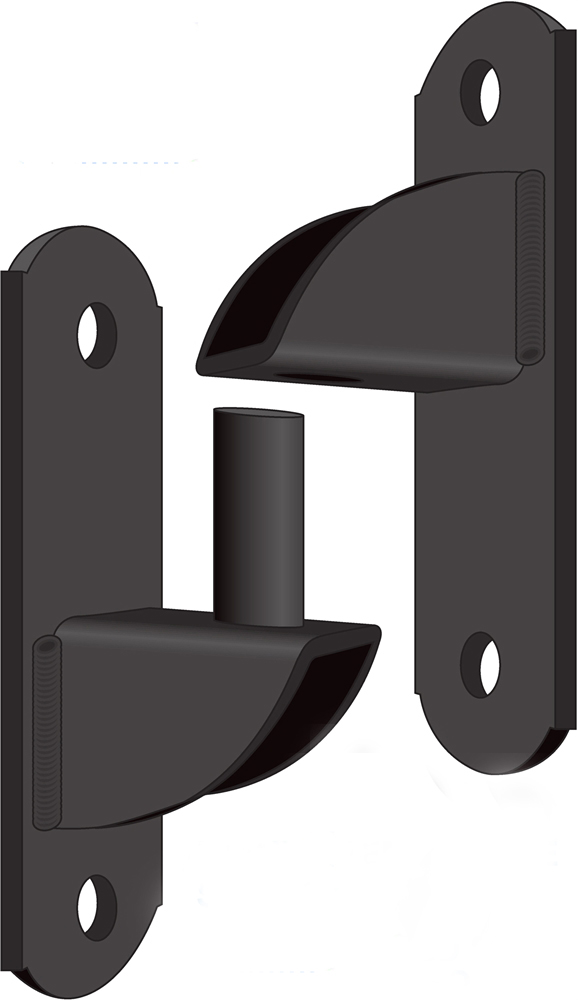

Arduino shield - better than my solution of jamming the wires into the Arduino itself.Needs to have enough pins to accommodate 1 or 2 servos (digital I/O) and your keypad (7 digital I/O for 3x4 aka 12-button keypad).Arduino Uno board (or whatever Arduino board you happen to have).The gate stays locked when the power is off, and the locking mechanism can be moved manually (from the inside) in case of emergency or power outage. There is a hidden button inside the gate that functions to lock/unlock the gate from the inside. The gate stays unlocked until the lock button is pushed. You can use this instructable to secure a gate that only swings inward (or outward) too - the project is actually simpler to perform.Įnd Result: The keypad on the outside of the gate functions to unlock and lock the gate. The locking mechanism should stay unlocked, because we often leave the gate open when working all day in the yard.īackground: We have a double-swing gate, meaning that the gate will swing outward and inward. The EEPROM memory retains all entry codes and programming, even without power.Goal: Figure out a way to lock our double-swing gate from both sides, securing the yard. Power can be obtained from the access device or a separate power supply. The AK-11 is powered from a 12-24 Volt AC or DC source. Two solid state outputs, capable of switching 100 mA to common, are programmable to signal forced entry, door ajar, lockout, alarm circuit shunting, request-to-enter, and keypad active conditions. This output can be wired to shunt alarm contacts on the access door/gate to prevent triggering of an alarm when authorized access occurs. The ALARM SHUNT output activates when access is granted.
GATE KEYPAD CODE
The "anti-passback" feature prevents using the same code twice before the programmed time elapses. The REQUEST-TO-ENTER input can be wired to a pushbutton or fire access keyswitch to provide codeless entry for authorized personnel. If programmed for "inhibit", the input can be wired to a "service" switch or automatic timer that will disable the Relay #1 when required. If programmed for "door sense", a switch on the door detects forced entry or door ajar situations. The DOOR SENSE/INHIBIT input can be used two ways. An internal sounder beeps when each key is pressed. The light can be programmed to activate indefinitely, or for 1, 2, 3, or 4 minutes after the last key press The keypad's courtesy light illuminates the keys. The right indicator lights yellow when the keypad is in lockout condition (from too many incorrect code entries). The left indicator lights red to indicate power, then turns green when access is granted. Two indicators show the status of the entry system. When power is restored to the keypad, each relay will assume the state it was in when power was removed. The on or off toggle state of a relay is maintained even after power interruption.

The relays can be set for timed or latch-on/latch-off toggle operation per each individual entry code. They can activate either, or both, of the relay outputs.

Up to 480 entry codes, from 1 to 6 digits in length, can be programmed. The die-cast keys have bright, easy-to-read yellow graphics. The keypad is housed in a rugged cast aluminum enclosure that can be mounted to a pedestal or bolted directly to a wall. The Linear Model AK-11 Exterior Digital Keypad is a digital keyless entry system designed for access control applications. Keylock secures keypad to mounting backplate Programmable courtesy light illuminates keypad for 1, 2, 3, or 4 minutes, or always on Key operating features include: door sense input inhibit input request-to-exit input alarm shunt output timed anti-passback and keypad lockout Up to 480 programmable input codes of one to six digits each for activating either or both relays Rugged, cast aluminum enclosure for indoor or outdoor mounting on a wall or pedestalįour independent outputs and timers: two form C relays and two solid-state open collector outputs with unique programming per entry code Self-contained keyless entry system ideal for airports, hospitals, warehouses, office buildings, parking lots, and many other commercial facilities


 0 kommentar(er)
0 kommentar(er)
